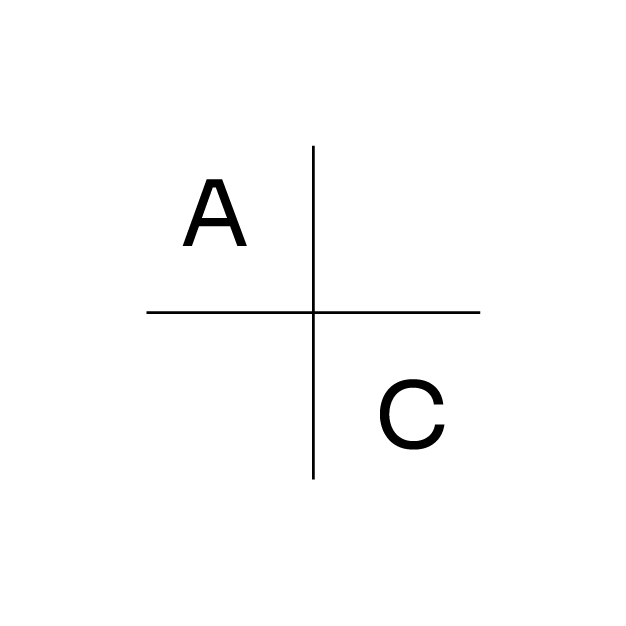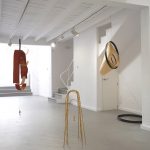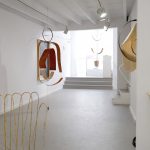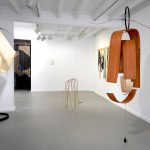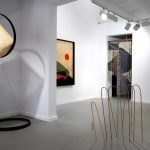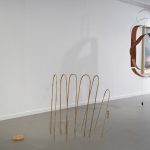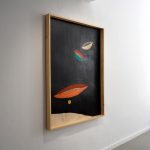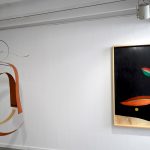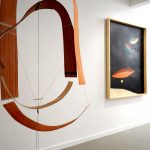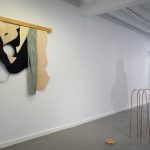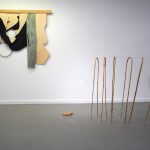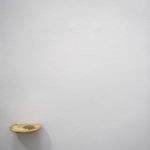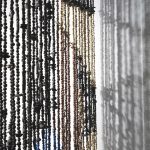CRISTINA MEJÍAS. LUCERO
10.09.22 > 19.11.22
DON’T ASK ME ABOUT THE BALANCE
«Del equilibrio no me preguntes quién descansa o el margen
que descansa».
Mano que espeja, Cristina Elena Pardo
In the summer of 1971, a young Frenchman called Phillipe Petit stretched a cable between the bell towers of Notre Dame and walked between them. Inside the church, a solemn ceremony was taking place: other young people were praying, kneeling on the ground. After three years and a few other vicissitudes, Petit managed to sneak into the World Trade Center. For forty-five minutes, he walked between the two towers. The scene was astonishing: a tiny man standing on a thread in the void.
By taking terrible risks and using extraordinary skill, tightrope walkers perform remarkable futile feats. Walking over the abyss that separates two skyscrapers adds nothing more to the history of humanity than an eccentric anecdote, interchangeable with the feat of the most tattooed woman in the world or the most obese individual. However (and unlike the previous ones), the image of the boy on the wire is captivating, because having the potential to fall, he stands.
In a strangely poetic moment in his Meditations, Descartes describes his scepticism as the uncertainty of someone walking in darkness, fearing at every step to fall. Precarity and danger make the most ordinary things precious. In my legs, at this moment, the same forces are compensated as in those of a tightrope walker, and the slightest misalignment would produce the same result: we would fall to the ground; but that which is barely supported evidences, in a way that seems beautiful to us, the resistance to the inevitable fall that awaits us all.
***
The Pythagorean philosophers argued that the movement of the stars does not take place in silence. They even managed to demonstrate the harmony of the celestial concert by calculating the distances and speeds of the wandering bodies. Who would have thought that the universe was out of tune? In the introduction to Cronopios, Cortázar tells us that when he presses the spoon with which he stirs the coffee between his fingers, he feels “its metal beat, its suspicious warning”. The jingling cutlery: the acrobat above the cathedral (the fortuitous meeting on a dissecting table of a sewing machine and an umbrella; the hoop of a barrel and the seat of a chair; the bone, the fillet and the thread). “Thread is a very simple thing: just a line in space,” Didi-Huberman writes. “But it is also something very complex: a skein, a complication of strands. […] The thread always hangs by a thread. Such is its beauty.”
In the presence of air and an ear, everything that moves sounds: that which rises and that which sinks. Everybody that moves stirs up the gases around it, generating an involuntary breath that strikes, softly, other bodies it does not touch. The hurricane and the breeze are a mere question of scale, like equilibrium and collapse. Climbing on his cable, the tightrope walker underlines the flimsiness of all support: he shows us how incredibly long-lived beings would see our instability.
It’s funny: Phillipe Petit has survived the Twin Towers and the roofs of Notre Dame de Paris. The buildings existed just long enough to host a little number of wobbling and skill. Then, amidst a huge roar, they collapsed.
Joaquín Jesús Sánchez
…
Cristina Mejías (Jerez de la Frontera, Cádiz, 1986) presents her first solo exhibition at the Alarcón Criado gallery.
The show features a series of unpublished works arranged throughout the two spaces of the gallery: one illuminated, which connects through a threshold with another in semi-darkness. The elements of water and air surround several of the pieces as motors that infuse movement and at the same time are capable of carrying the briefest whisper.
In a relationship of profound interdependence and as a sounding board, the space thus hosts a set of pieces where the turning of one means the pulsation of another and the weight of a body, as in a magnetic compass, generates a tension that sustains another body.
The title that gives the project its name, Lucero, refers to the star Venus, the only planet that rotates clockwise. In ancient times it was considered that its light radiated from a star or even that it was two different celestial bodies, depending on whether it was observed at dawn or as an evening star, since its light, depending on its orbit, is sometimes the first “star” visible at dusk or the last to disappear at dawn. Witness of the day and troubadour of the night, its circular trajectory, always close to the sun, gains momentum on the horizon. Each impulse twists the course of what comes after, and its relay may be familiar to us, but even the slightest pebble changes the course of a river.
Cristina Mejías
